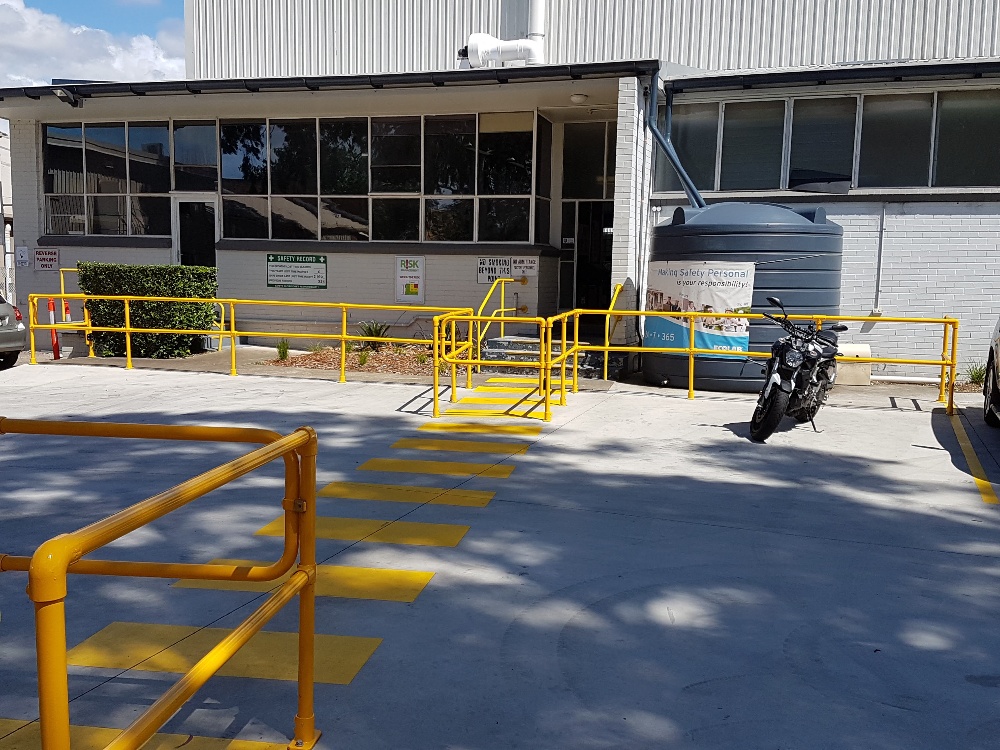At SafeQuip, we often get asked what type of Traffic Management Plans we offer. A Traffic Management Plan is essential for site safety — whether the site is brand new, temporary, or established.
In this article, we explain the distinction between a temporary and permanent Traffic Management Plan. We also delve into the SafeQuip process for traffic management to guide you through your site safety optimisations.
What are traffic management plans?
A Traffic Management Plan is a comprehensive document that outlines the safe and efficient movement of vehicles, pedestrians and goods, within a specific area. It identifies potential hazards and risks and details how they will be managed, ensuring safety, legal compliance, operational efficiency and improved accessibility.
A Traffic Management Plan typically includes a range of factors, such as:
- The types of traffic
- Traffic control measures
- Emergency exits and routes
- Pedestrian and vehicle flow and routes
- Vehicle operation zones
- Frequency of vehicles and pedestrians interacting
- Barriers, walkways and signage layout
- How short-term, mobile work and complex traffic situations will be managed.
- Traffic responsibilities
- Traffic monitoring
If you’re considering improving your traffic management, read our article comparing Traffic Management Plans with Traffic Management Standards.
Now that we’ve covered Traffic Management Plans, what’s the difference between a temporary and a permanent TMP?
What is a Temporary Traffic Management Plan?
Temporary Traffic Management Planning focuses on sites where traffic is operating on a short-term basis. For example, common environments requiring temporary Traffic Management Plans include:
- Roadworks
- Construction sites
- Emergency zones
- Utility maintenance
- Film sets
- Temporary detours
- Pop-up markets
- Bridge inspections.
If a temporary TMP is developed, it will only apply until the relevant work is complete. However, before the new site is up and running, a second and permanent TMP may be required, depending on the site’s functionality. For example, a new warehouse will require a temporary TMP during construction and a permanent TMP once it is operational.
.jpg?width=2500&height=1042&name=Roadworks%20and%20temporary%20traffic%20management%20(1).jpg)
What is a permanent Traffic Management Plan?
A Traffic Management Plan (TMP) outlines how traffic will be managed in an operational workplace. They account for a range of traffic types, including people, vehicles, and other mobile plant equipment, such as forklifts, rollers, and elevated working platforms.
Permanent Traffic Management Planning is a critical aspect of ensuring safety in environments where traffic flows and interactions are ongoing. Common environments requiring permanent Traffic Management Plans include:
- Warehouses
- Industrial facilities
- Manufacturing plants
- Distribution centres
- Ports and airports
- Hospitals
- Shopping centres
- Parking structures.
At SafeQuip, we specialise in traffic management for permanent workplaces. We create Traffic Management Plans that are safe and compliant but also practical for the customer’s operations.

What is included in a Traffic Management Plan?
A Traffic Management Plan considers various forms of traffic in the workplace, including people, vehicles, and mobile plant equipment.
-
Worksite features and layout
Your plan will include a comprehensive analysis of your worksite’s features, such as open walkways, shared zones, areas of poor visibility, and traffic patterns.
The Traffic Management Plan is also intended as a training document, used when training all site personnel, including both new staff inductions and ongoing staff training.
To enhance safety on your site, the plan will also outline the key measures that need to be implemented, such as barriers, line marking, safety signage, bollards, and more.
Next steps: How can SafeQuip help?
If you have a permanent work site, building, or premises, we can help!
Before creating a Traffic Management Plan, we will conduct a thorough Site Safety Audit to assess the safe and orderly movement, loading, unloading, parking and pedestrian access throughout the facility. To determine if this is the right step for you, complete our quick and easy quiz by clicking below.